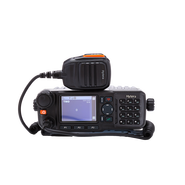Besides water, it also produces 2 400 MW of electricity for the Eastern Province of Saudi Arabia. The plant is in the Ras Al Khair Industrial City, 75 kilometers north-west of Jubail.
Customer's Challenges
- Limited frequencies
The spectrum resources for the TETRA system in the Kingdom of Saudi Arabia is quite limited as the government plans to allocate the 380 MHz to 430 MHz frequencies bands to Public Security & Safety departments. When SWCC applied for the frequencies for their TETRA system to Communications and Information Technology Commission (CITC), they only got frequencies around 340 MHz among which no TETRA vendors had products in that band.
- Special government requirements
High Commission of Industrial Security (HCIS, part of Ministry of Interior, Kingdom of Saudi Arabia) has special requirements for the communication system for all the industrial projects in Kingdom of Saudi Arabia, part of which are:
- All portable radios must be intrinsically safe (for hazardous environment inside the factory).
- All the voice calls must be recorded and kept for at least 12 months.
- The system should be highly reliable with redundant design.
Our Solution
After a careful study of the customer demands, Hytera offered a tailored solution including Hytera ACCESSNET-T IP which features:
- Low band frequency between 320-380MHz, which is lower than the usual 380-430MHz.
- The world's first "ia" level ATEX TETRA portable radio Hytera PT790Ex which compiles with the highest intrinsically safe standard for all hazardous environments.
- Visualized dispatching system with AVL function and voice recording system.
- High reliability that fully complies with the requirement of HCIS which includes redundancy and hot-backup design for main components of the system.
Benefits
The Hytera PT790Ex works perfectly fine in the noisy environment inside the factory while providing the highest level of protection. The redundancy design of the TETRA system not only guards against faults, but also allows software upgrades to be performed online, thus improving planned as well as unplanned downtime, providing instant and reliable communication all the time.


